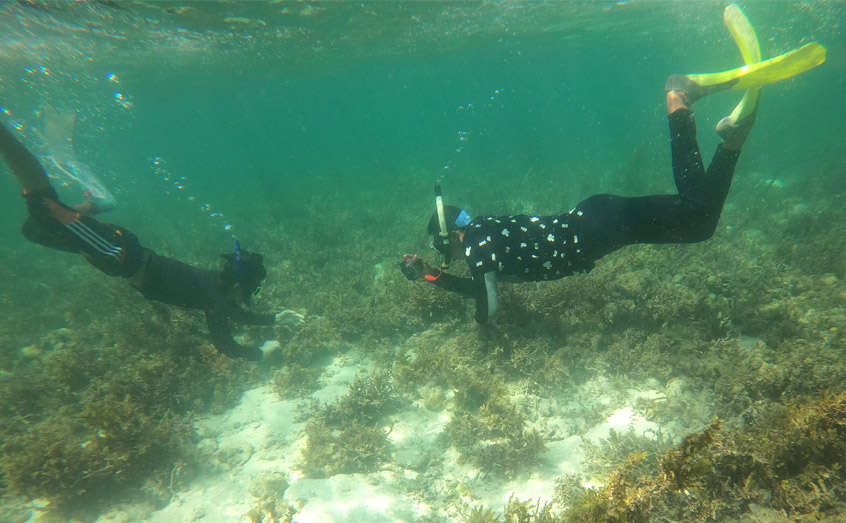SAMS news room
Loss of seaweeds will affect ocean health

An international seaweed research programme has today released a landmark report outlining the threats facing global seaweed habitats.
The report highlights how human-induced threats, including global climate change, overfishing, pollution and an increase in invasive non-native species, could result in dramatic changes in distribution and diversity of seaweed species and their habitats and what this could mean for both ocean and human health.
The State of the World’s Seaweeds report combines the most up-to-date scientific evidence and emphasises that despite the importance of seaweeds, and the severity of the threats they face, they are afforded inadequate conservation measures. Authors of the report call for these major gaps to be addressed.
The programme behind the report, GlobalSeaweed-SUPERSTAR, is funded by the UK’s Global Centre on Biodiversity for Climate (GCBC) and led by SAMS.
Lead author of the report, Dr Sophie Corrigan, from the Natural History Museum, London said: “Seaweeds are often the unsung heroes of the marine world. They form some of the largest marine habitats we have and underpin so many marine resources, as well as playing an important role in the function of other marine habitats such as cementing coral reefs together and protecting them from wave damage. Food, medicines and even the cosmetics industry rely on seaweed for the properties they can offer.
“While interest in kelp forests is rightfully building, other seaweeds have been left behind. This is something we want to change, and we’re hoping that all seaweeds will benefit from the Global Biodiversity Framework’s 30by30 initiative as more protected areas are created or expanded in the coming years.
“Safeguarding the future of seaweeds and realising the full potential of seaweeds and their uses will require a global movement to unite governments, researchers, industries, charities, Indigenous Peoples and local communities in protecting seaweeds. This report is an important step in that process.”
Seaweeds are red, green and brown macroalgae. The ancestors of the reds lived on the Earth over 1.6 billion years ago. Collectively seaweeds cover an area the size of Australia, making them the largest of the planet’s vegetated marine habitats which many other species depend on.
They play a significant role in cleaning up our world and absorb carbon dioxide at a far greater rate than many plants on land do and can help to absorb pollution from the oceans as well.
There are also millions of seaweed farmers in 56 countries worldwide who rely on seaweed for their livelihoods. The vast majority of farmers are in Asia, which accounts for more than 95% of global seaweed farming.
However, seaweeds face an uncertain future: they are threatened by many pressures but the necessary data to determine the rate at which seaweed habitats are being lost globally does not exist. It is predicted that the majority of seaweeds will experience a high degree of local extinction and poleward expansions by the end of the century, with overall global declines in coverage and diversity.
Prof. Juliet Brodie of the Natural History Museum, London, along with GlobalSeaweed-SUPERSTAR programme leader Prof. Elizabeth Cottier-Cook of SAMS and Prof. Lim Phaik Eem from the University of Malaya are co-authors on the State of the World’s Seaweeds report.
Prof. Cottier-Cook said: “The State of the World's Seaweeds is a landmark report, providing a robust knowledge base for the development of a global conservation strategy. A strategy that will not only protect wild seaweeds, but sustain the future livelihoods of the millions of farmers dependent on this invaluable resource.”
